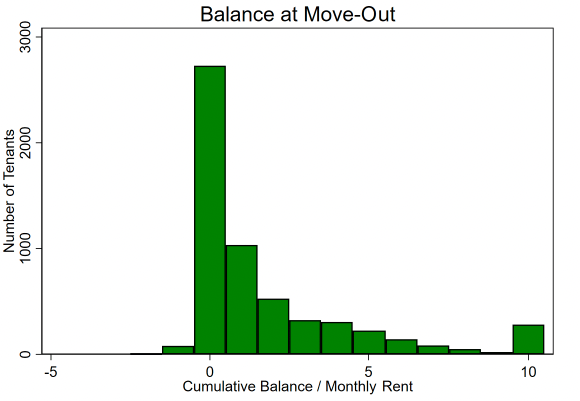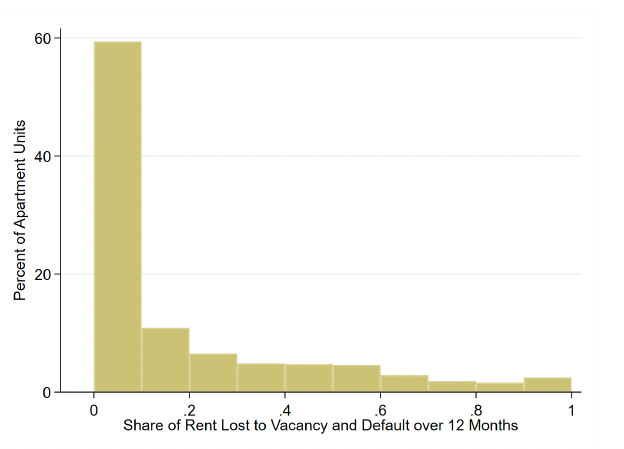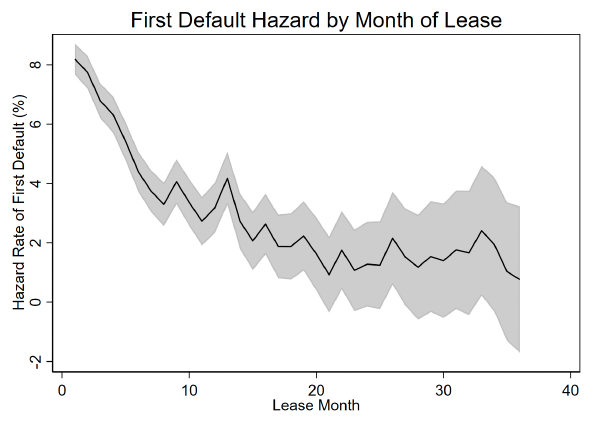Humphries et al. (2024)
The economics of Housing & Homelessness
Overview
We would like to better understand the decision problem for a landlord when a tenant fails to pay rent so that we can better shape policy
Essence of the Motivation
Empirical Observations
- "Nonpayment events are far more common than eviction filings"
- "Forbearance is targeted at tenants with relatively high probability of recovery"
Findings
- "Most evicted tenants have low probability of paying rent over the next 12 months"
Findings in contrast to Empirical Observations involve Counterfactuals
Background
Novel Descriptive Statistics
- "Apartments remain vacant for about 2 months on average after a tenant departs"


Keep in Mind that these are Statistics for tenants who were allowed to fall `x' months behind ...

Risk


\text{Evict}_{it} = \alpha_t + \alpha_{l(i)} + \alpha_{\tau(i,t)} + \sum_b \beta_b 1_{\{Bal_{it} = b\}} + \gamma B_{it} + \delta B_{it} 1_{\{Tenure_{it} > 12\}} + \epsilon_{it}
Evicted
Time
Landlord
Tenure
Balance
Months Behind


The Model
Limitations of the Model
- "Filing an eviction is an irreversible decision"
- "Landlords learn about tenant types over time only through rent payments"